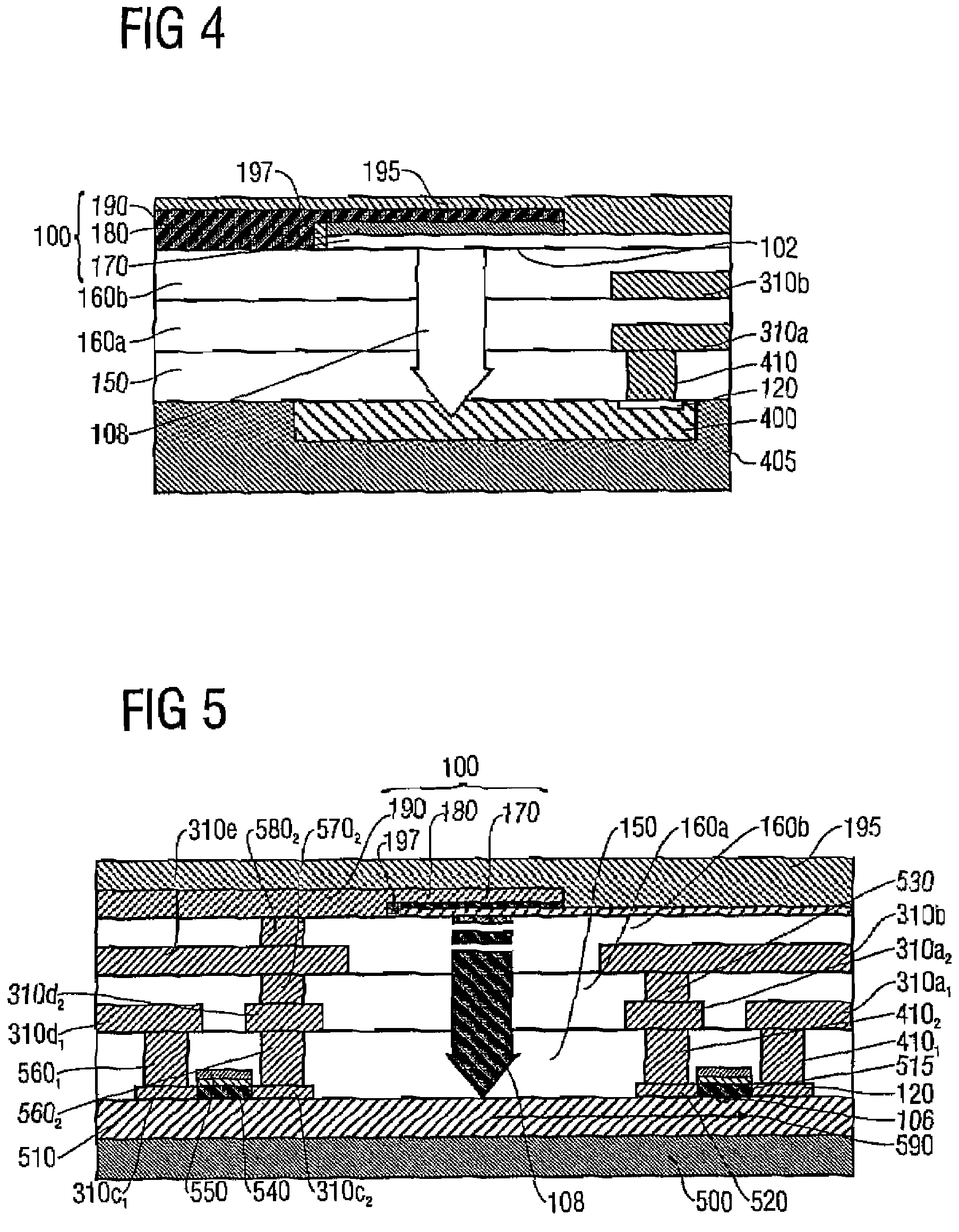Integrated optocoupler with organic light emitter and inorganic photodetector
a technology of organic light emitters and optocouplers, applied in the direction of diodes, semiconductor devices, electrical apparatus, etc., can solve the problems of high manufacturing cost, difficult integration, and inability to produce both elements on the same substrate, so as to achieve the reduction of oled area, low current consumption, and economic
- Summary
- Abstract
- Description
- Claims
- Application Information
AI Technical Summary
Benefits of technology
Problems solved by technology
Method used
Image
Examples
Embodiment Construction
[0044]Before describing the present invention more in detail hereafter with reference to the drawings, the attention is drawn on the fact that same elements in the figures are designated by same or similar reference numerals, and that a repeated description of these elements is omitted.
[0045]FIG. 1 shows an OLED 100 as a bottom emitter, which has a light-emitting surface 102 and radiates directly onto the photodetector 104 located under it, which is for example part of a CMOS structure. The photodetector 104 is embedded in a substrate 110, is connected through a contact 120 and shielded by an ILD layer 150 of the CMOS structure. An IMD layer 160 of the CMOS structure serves as a basis or substrate for the OLED 100, i.e. on the IMD layer 160 are deposited a transparent electrode 170, a series of organic layers 180 and a second electrode 190. A passivation or protective layer 195 serves as finishing layer and a side passivation 197 isolates the transparent electrode 170 from the secon...
PUM
 Login to View More
Login to View More Abstract
Description
Claims
Application Information
 Login to View More
Login to View More - R&D
- Intellectual Property
- Life Sciences
- Materials
- Tech Scout
- Unparalleled Data Quality
- Higher Quality Content
- 60% Fewer Hallucinations
Browse by: Latest US Patents, China's latest patents, Technical Efficacy Thesaurus, Application Domain, Technology Topic, Popular Technical Reports.
© 2025 PatSnap. All rights reserved.Legal|Privacy policy|Modern Slavery Act Transparency Statement|Sitemap|About US| Contact US: help@patsnap.com



